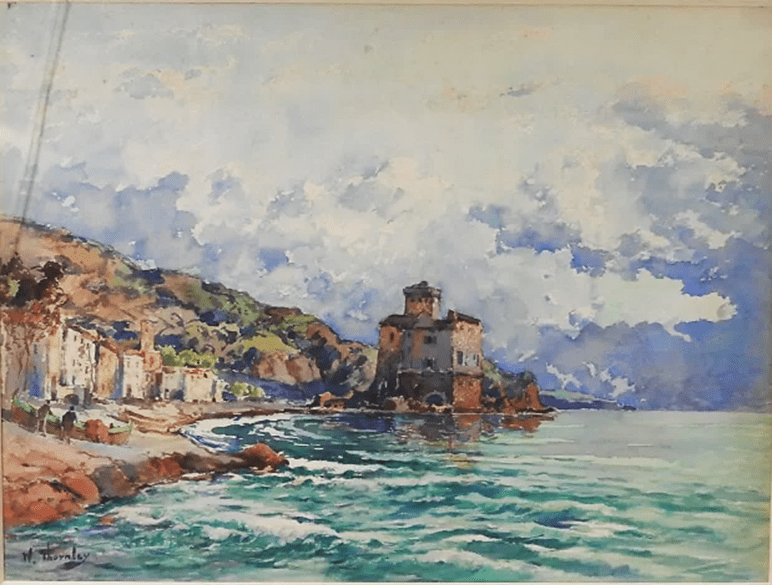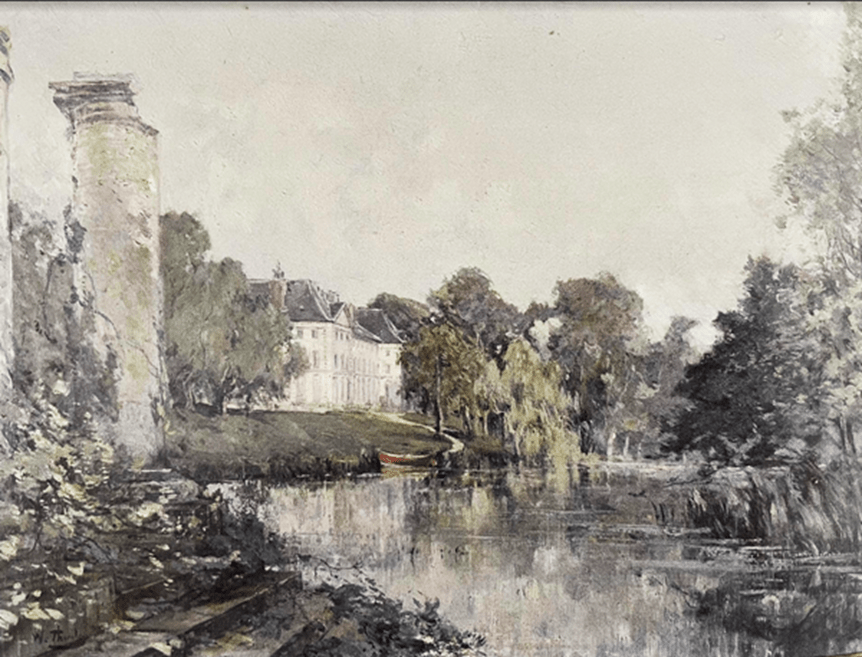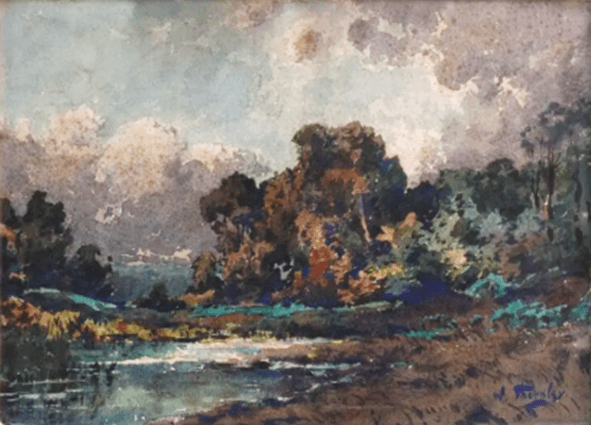Rapallo -Italie. Aquarelle (44,5x59cm). Collection privée. Entre 1900 et 1925.
Rapallo est une jolie ville côtière de la Riviera ligure orientale, située à l’Est de Gênes.
Se dressant fièrement sur l’extrémité du front de mer de Vottorio Veneto, son Château (symbole de la Cité) est relié au continent par une jetée. Il a été construit au XVIème siècle pour protéger la ville des pirates sarrrasins.
C’est à Rapallo que fut ébauchée, en 1901, ce qui allait devenir la symphonie n° 2 du compositeur finlandais Sibélius (1855-1957).
L’histoire ne dit pas si c’est en 1901 que William Thornley, qui fit de nombreux voyages en Italie (1900 à Bordighera, 1906 et 1907 puis 1921 à San Rémo ,1924 à Venise) peignit cette charmante aquarelle, ni même s’il eut l’occasion de croiser Jean Sibelius à Rapallo.
Une chose est sûre, c’est que cette aquarelle est postérieure à son premier cycle de voyages qui le conduisit en Riviera ligure vers 1880, comme en attestent le format de la signature et la maturité de cette œuvre. Elle est à situer probablement entre 1905 et 1925.

Rapallo -Italy. Watercolor (44.5x59cm). Private collection. Between 1900 and 1925.
Rapallo is a pretty coastal town on the Eastern Ligurian Riviera, located east of Genoa.
Standing proudly at the end of the Vottorio Veneto seafront, its Castle (symbol of the City) is connected to the mainland by a pier. It was built in the 16th century to secure the city, which was facing attacks from Saracen pirates.
It was in Rapallo that, in 1901, what would become Symphony No. 2 by the Finnish composer Sibelius (1855-1957) was sketched out.
History does not say whether it was in 1901 that William Thornley, who made numerous trips to Italy (1900 to Bordighera, 1906 and 1907 then 1921 to San Remo, 1924 to Venice) painted this charming watercolor, nor even he had the opportunity to meet Jean Sibelius in Rapallo.
One thing is certain, it is that this watercolor dates from after his first cycle of travels which took him to the Ligurian Riviera around 1880, as evidenced by the format of the signature and the maturity of this work. It is probably placed between 1905 and 1925.



